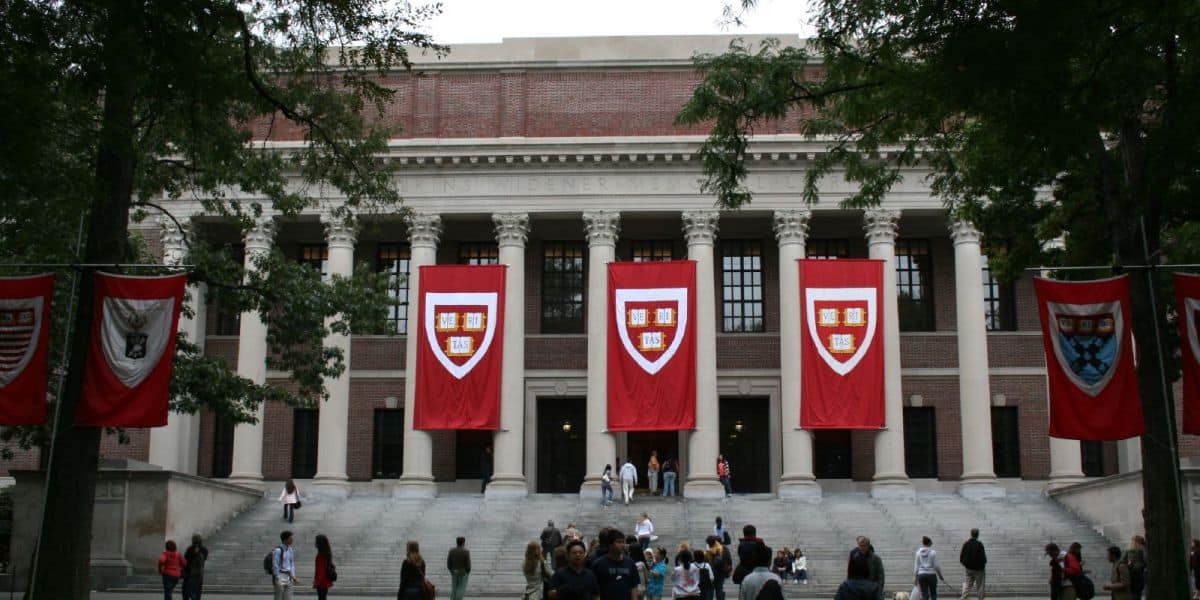Harvard has long been accused of fostering an anti-free speech environment and quelching viewpoint diversity. That was the subject of my recent debate with Law Professor Randall Kennedy at Harvard. A new report confirms many of the objections raised in that debate, including a chilling environment where only a third of Harvard’s most recent graduating class expressed comfort in discussing controversial subjects.
Some 89 percent of the graduating class responded to the survey. The study of the Classroom Social Compact Committee, co-chaired by Economics professor David I. Laibson ’88 and History professor Maya R. Jasanoff ’96, found that, with an overwhelmingly liberal faculty and student body, even liberal Harvard students still found a chilling environment for free expression at the school. And it is getting worse. The results show a 13 percent decrease from the Class of 2023.
This year, Harvard found itself in a familiar spot on the annual ranking of the Foundation for Individual Rights and Expression (FIRE): dead last among 251 universities and colleges.
What is most striking is the fact that Harvard has created this hostile environment while maintaining an overwhelmingly liberal student body and faculty. Only 9 percent of the class identified as conservative or very conservative.
Yet, even liberals feel stifled at Harvard. Only 41 percent of liberal students reported being comfortable discussing controversial topics, and only 25 percent of moderates and 17 percent of conservatives felt comfortable in doing so.
During the Harvard debate, I raised the gradual reduction of conservatives and libertarians in the student body and the faculty.
The Harvard Crimson has documented how the school’s departments have virtually eliminated Republicans. In one study of multiple departments last year, they found that more than 75 percent of the faculty self-identified as “liberal” or “very liberal.”
Only 5 percent identified as “conservative,” and only 0.4% as “very conservative.”
According to Gallup, the U.S. population is roughly equally divided among conservatives (36%), moderates (35%), and liberals (26%).
So Harvard has three times the number of liberals as the nation at large, and less than three percent identify as “conservative” rather than 35 percent nationally.
Among law school faculty who donated more than $200 to a political party, 91 percent of the Harvard faculty gave to Democrats.
While Professor Kennedy dismissed the notion that Harvard should look more like America, the problem is that it does not even look like Massachusetts. Even as one of the most liberal states in the country, roughly one-third of the voters still identify as Republican.
The student body shows the same bias of selection. Harvard Crimson previously found that only 7 percent of incoming students identified as conservative. The latest survey shows that level at 9 percent.
Some faculty members are wringing their hands over this continued hostile environment. However, the faculty as a whole is unwilling to restore free speech and intellectual diversity by adding conservative and libertarian faculty members and sponsoring events that reflect a broad array of viewpoints.
Given my respect for Professor Kennedy, I was surprised that he dismissed the sharp rise in students saying that they did not feel comfortable speaking in classes. Referring to them as “conservative snowflakes,” he insisted that they had to have the courage of their convictions.
This ignores the fact that they depend upon professors for recommendations, and challenging the school’s orthodoxy can threaten their standing. Moreover, a recent survey shows that even liberal students feel chilled in the environment created by Harvard faculty and administrators.
There was a hopeful aspect, however, to the debate. Before the debate, the large audience voted heavily in favor of Harvard’s position. However, after the debate, they overwhelmingly voted against Harvard’s position on free speech.
It is an example of how exposure to opposing views can change the bias or assumptions in higher education.
There is little likelihood that Harvard or higher education will change. It is like the old joke about how many psychiatrists it takes to change a light bulb. The answer is just one but the bulb really has to want to change.
At the end of the day, there is no real indication that Harvard faculty want any of this to change. They will continue to report the results of surveys and express deep angst and confusion over the results. What they will not do is meaningfully change their course in the hiring of faculty, admission of students, and sponsoring of debates.
Reprinted with permission from JonathanTurley.org.

